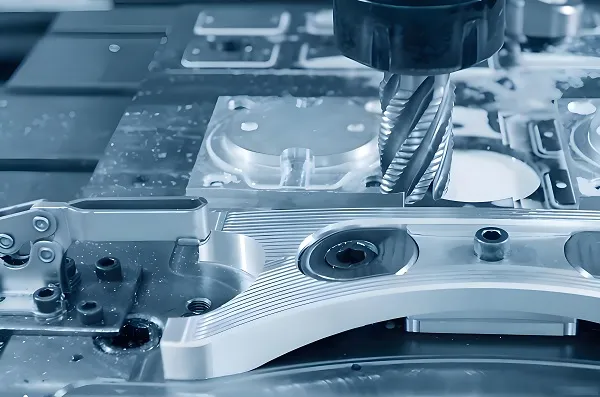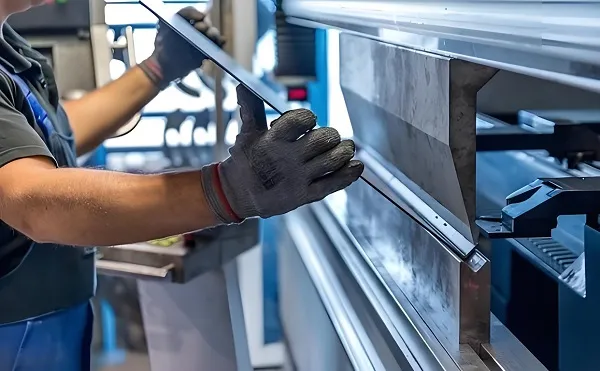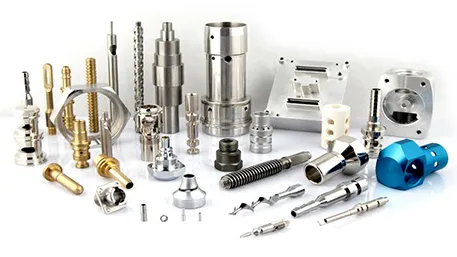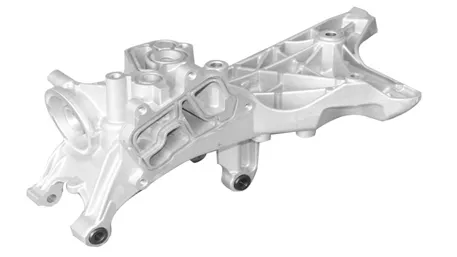Abstract: This article elaborates in detail on the principle, process characteristics, advantages of CNC (Computer Numerical Control) metal prototype machining, and its wide application in modern manufacturing, and also looks forward to its future development trend. Through in-depth analysis, it reveals the important role of CNC metal prototype machining in promoting product research and development, improving production efficiency, and ensuring product quality.
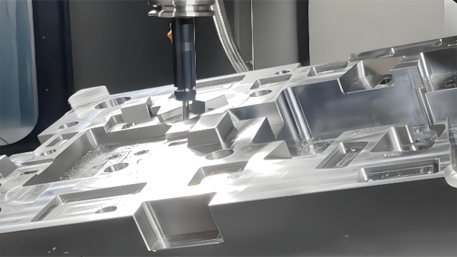
I. Introduction
In the context of the rapid development of the manufacturing industry today, CNC metal prototype machining, as an advanced manufacturing technology, has become an indispensable link in the product development and manufacturing process. It can not only quickly and accurately manufacture complex-shaped metal prototype parts but also provides strong support for the optimal design and performance testing of products.
II. The Principle of CNC Metal Prototype Machining
CNC metal prototype machining is based on digital control technology, and the movement of the machine tool and the cutting action of the tool are controlled by the pre-written machining program. The coordinate axes of the machine tool (usually X, Y, Z axes, and some advanced machine tools also have more rotary axes) move precisely according to the program instructions, and the tool performs machining operations such as cutting, milling, and drilling on the metal material, gradually machining the blank material into the required prototype parts.
III. Process Characteristics
High Precision: It can achieve micron-level or even higher machining precision, meeting the strict requirements for the size and shape accuracy of parts.
Complex Shape Machining Capacity: It can machine metal prototypes with complex shapes such as free-form surfaces, internal cavities, and special-shaped structures.
Material Diversity: It is suitable for various metal materials, such as aluminum alloys, stainless steel, titanium alloys, etc., to meet the performance requirements of different application scenarios.
Repeatability: As long as the machining program remains unchanged, it can ensure that the machined prototype parts have a high degree of consistency and repeatability.
IV. Advantages
Shortening the Product Development Cycle: Rapidly manufacturing metal prototypes enables designers to conduct tests and evaluations in a timely manner, accelerating the product research and development process.
Cost Reduction: Compared with traditional manufacturing methods, in the small batch production or trial production stage, CNC metal prototype machining can effectively reduce costs.
Optimal Design: Through the actual testing and analysis of the prototype, problems in the design can be discovered, and optimization and improvement can be carried out in a timely manner.
Improving Product Quality: High precision and good surface quality contribute to improving the performance and reliability of the product.
V. Application Fields
Aerospace: Manufacturing prototypes of aircraft components, such as engine blades and fuselage structural parts, for performance testing and verification.
Automotive Industry: Producing prototypes of automotive components, such as engine blocks and transmission housings, for assembly and performance tests.
Medical Devices: Machining metal prototypes of medical equipment, such as surgical instruments and implants, to ensure they comply with ergonomic and medical standards.
Electronic Industry: Manufacturing metal prototypes of electronic product shells and heat sinks to meet the heat dissipation and protection requirements of electronic devices.
VI. Research Cases of CNC Metal Prototype Machining:
Processing Case of Aluminum Reflector for Vehicle Lights
A car parts development company needed to manufacture reflector components for optical testing of vehicle lights, including brake lights, turn signals, parking lights, and fog lights reflectors.
Challenges: The optical details of the reflectors were complex, the surface accuracy requirement was ±0.05mm, and the mirror polishing to a surface roughness of Ra0.05μm was required, and it needed to be processed close to the 3D model without leaving large fillets.
Solution: Aviation aluminum 7075 was selected as the material, a five-axis high-speed machine tool and a multi-stage processing technology were adopted, a ball-end tool with a diameter of less than 5mm was used, and the final finishing used a tool with a minimum radius of 0.15mm. After processing, manual polishing was performed, and 3D scanning and roughness measurement of the optical surface were carried out multiple times.
Outcome: The surface roughness after CNC machining was Ra0.2μm, and it was within Ra0.05μm after manual polishing, and the surface accuracy tolerance was controlled within 0.05mm, meeting customer requirements.
Processing Case of Prototype of Automotive Transmission Products
Challenges: Traditional processing required multiple devices, complex processes, and multiple clamping times, resulting in high costs and long processing cycles.
Solution: The “Mytrunnion-1” 5-axis linkage vertical machining center from Kitamura was used, which had turning functions and could replace equipment such as CNC, EDM machines, molding machines, and electrode processing machines, reducing the clamping time and processing procedures.
Outcome: The processing cycle was reduced by approximately 54 hours, and the machine tool’s high shock absorption performance, excellent acceleration/deceleration performance, and high-speed and high-rigidity spindle ensured the processing surface quality and tool life.
Processing Case of Metal Shell of Mobile Phones
Challenges: The all-metal one-piece CNC processing process was complex, requiring multiple processes, and it was necessary to ensure the structural complexity and accuracy requirements of the shell, and the yield control was difficult.
Solution: Such as the process pioneered by Apple, the aluminum plate was die-cast and then underwent nine CNC milling processes, including rough machining, semi-rough machining, semi-finishing machining, and finishing machining. Subsequent processes such as polishing, sandblasting, and anodic treatment were also required.
Outcome: A precise one-piece shell was obtained, enhancing the appearance and touch experience of users and promoting the development of all-metal shells for 3C products.
VII. Future Development Trends
Intelligentization: Combining technologies such as artificial intelligence and machine learning to achieve intelligent monitoring, optimization, and fault diagnosis of the machining process.
High-speed and High-efficiency: Further improve the machining efficiency by increasing the spindle speed, feed speed, and acceleration of the machine tool, as well as optimizing the tool path and machining process.
Multi-axis Linkage and Composite Machining: Develop more multi-axis linkage machine tools and composite processing equipment integrating multiple processing functions to meet the machining requirements of more complex parts.
Green Manufacturing: Pay attention to energy conservation and environmental protection, adopt more efficient cooling and lubrication systems and energy-saving technologies to reduce resource consumption and environmental pollution during the processing process.
Finally
CNC metal prototype machining, as an advanced manufacturing technology, plays an important role in modern manufacturing with its advantages of high precision, complex shape machining capacity, and wide material applicability. With the continuous progress and innovation of technology, its development prospects in the future will be broader, providing continuous power support for the high-quality development of the manufacturing industry.

